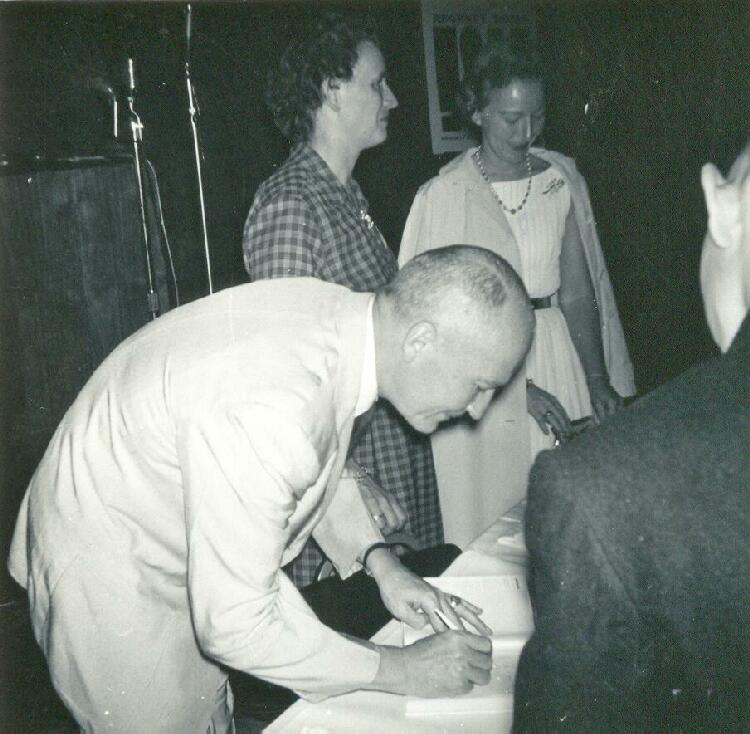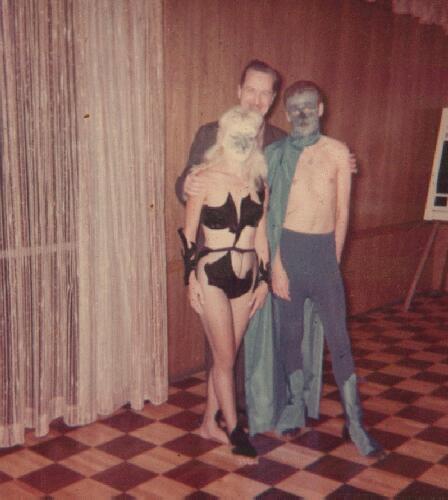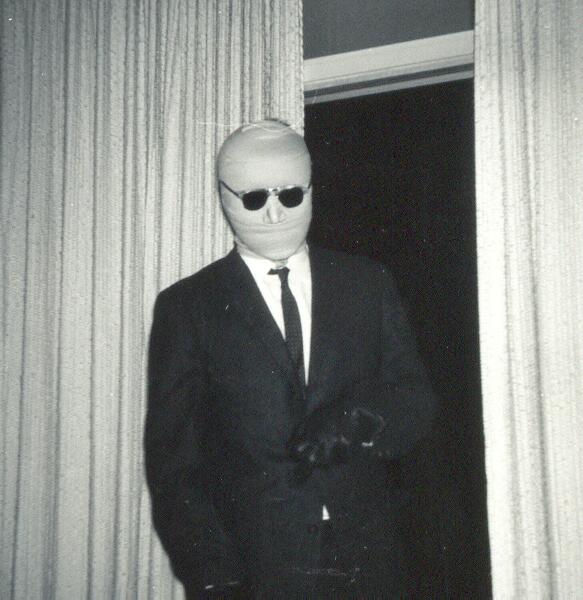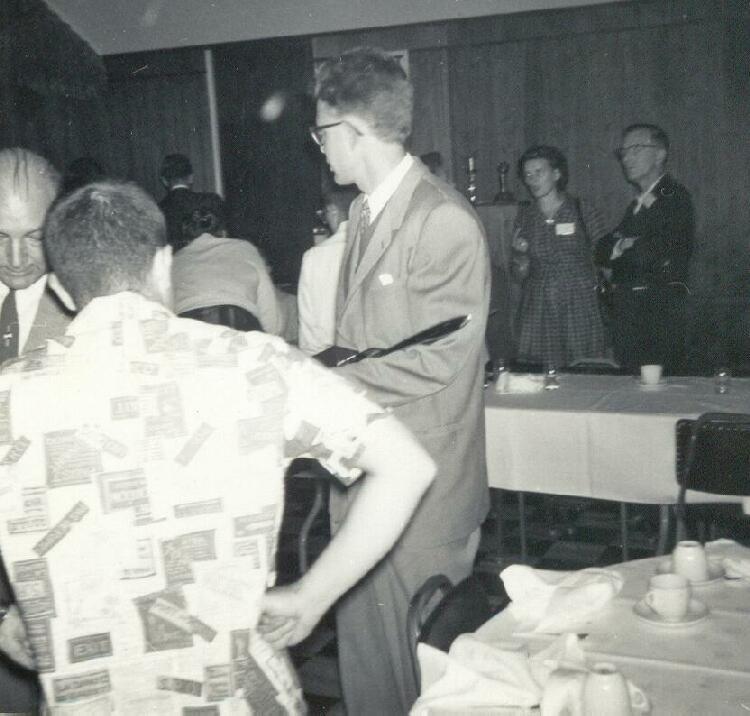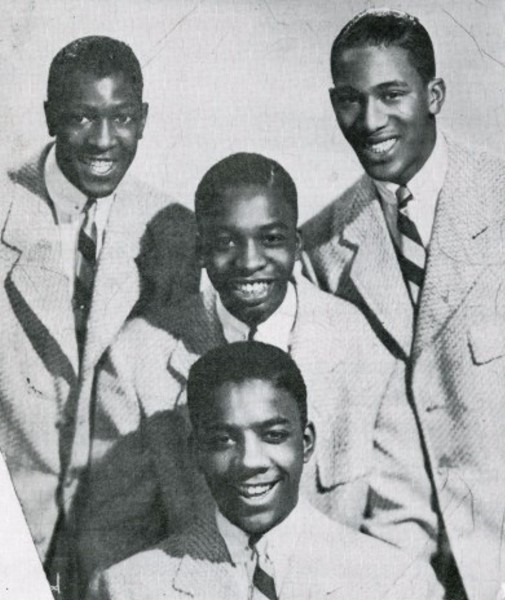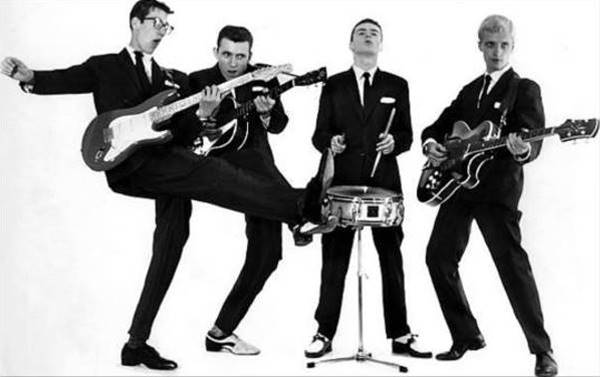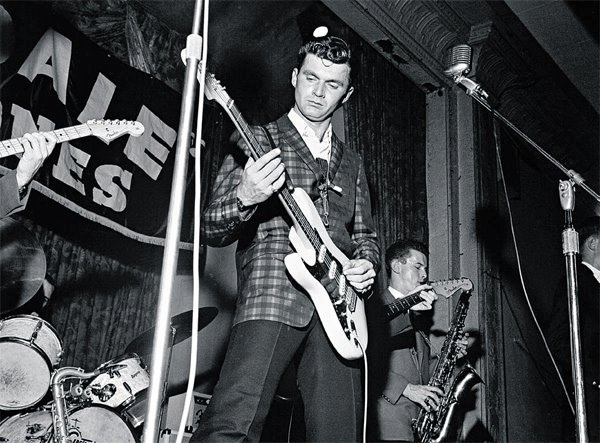
by Gideon Marcus

"Wake me when it's over, willya?"
In this month's Fantasy and Science Fiction, Isaac Asimov describes the dread he felt when his children suggested they all go see a "science fiction" film. The kids thought the mention of that term would sway him positively, seeing how sf is Asimov's bread and butter. Asimov knew better, though. Sci-fi films generally aren't very good, replete with scientific-sounding mumbo jumbo, giant monsters, and nonsensical plots.
Of course, in service to my readers, I make sure to see them all. Every so often, a gem slips through. Witness The Time Machine and The World, the Flesh, and the Devil. They may not be scientifically rigorous, but they are worth watching.
Galactic Journey's latest cinematic outing, Voyage to the Bottom of the Sea, is neither scientifically rigorous nor worth watching.
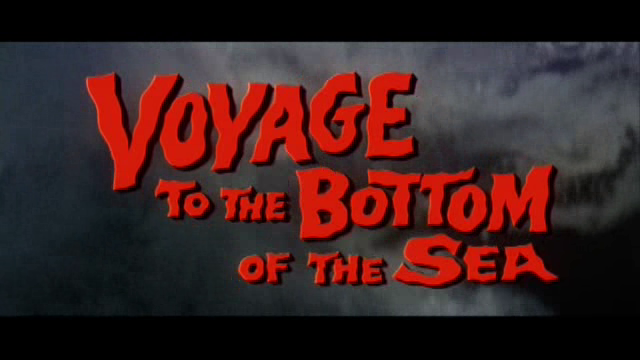
(Actual voyages to the bottom of the sea not included)
From the trailer, I'd expected a madcap romp across the ocean, a sort of modern-day cross between Mysterious Island and Journey to the Center of the Earth. Certainly, the snippet showing off Barbara Eden's jiggling hips and Frankie Avalon's trumpet, not to mention the giant octopus on the movie poster, suggested as much.
This is what we got instead:
The nuclear submarine Seaview surfaces at the North Pole, a moment billed as momentous (even though the real-life sub Nautilus accomplished this feat in 1958). Almost immediately thereafter, the Van Allen Belts catch fire, dramatically heating the Earth, and the ship is recalled home.
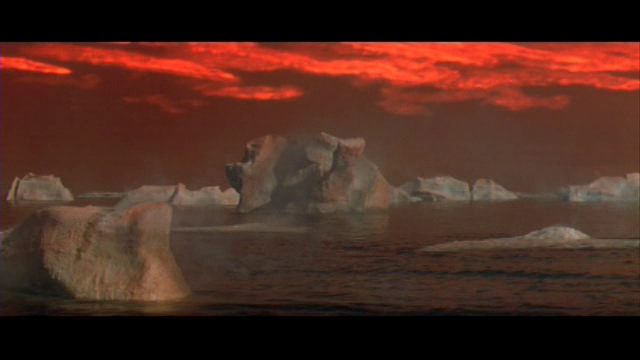
Yes, you read that right. The Van Allen Belts caught fire. Never mind that despite the hellish radiation resulting from all those charged particles whizzing around up there (which I described in my recent article on Explorer 12), the space up there is essentially a vacuum. What matter exists in the Belts comprises just free nuclear particles — neutrons, protons, and electrons. There's virtually nothing up there to burn. Certainly not in the literal sense, i.e. rapid oxidation.
Never mind that. I can overlook an improbable premise if it results in a good flick. Sadly, this one does not. Quite the opposite.
Upon arrival in New York, Admiral Nelson, the sub's creator and flag commander, announces before an emergency session of the United Nations that he can stop the heightening catastrophe before the Earth is burned lifeless. At odds with every other scientist in the world, Nelson believes that, by firing a nuclear missile at the proper trajectory into the Belts, upon detonation, the Belts will be saturated with radiation and poof out of existence. I'm not sure how the Admiral is qualified to make this deduction given his specialty is nuclear submarines, not geophysics.
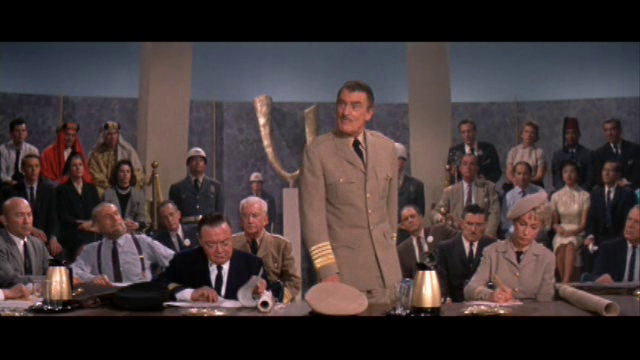
A scientist named Zuko declares that he is "diametrically opposed" to the Admiral's plan, that it will prove disastrous to the Earth, and that, by his calculations, the Van Allen fire will burn itself out before the Earth reaches the critical, point of no return, absolutely scientifically based, life-destroying temperature of 175 degrees Fahrenheit. The UN votes, and Zuko's admonitions are heeded. Nelson is not to proceed with his mad plan.
So, of course, Nelson does. The renegade Seaview, Nelson in command, takes off for the Marianas region of the Pacific. Three weeks hence, at a specific short window of time, he will fire his missile and save the Earth.
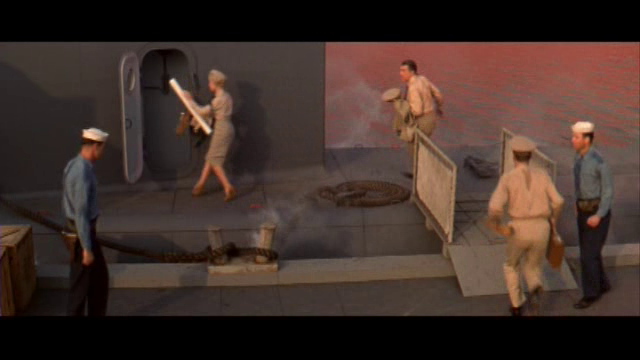
To the Marianas! (but not the bottom of the sea)
At this point, the movie has only committed a few sins: The science has been laughable, the protagonist has been portrayed as unquestioningly correct (despite no justification; well, we did see Nelson fondle a slide-rule at one point, so math was apparently involved), and despite the magnitude of the portrayed disaster, it's been a dull film. Come on, fellas — if you're going to present an Earth-ending event, at least let us see some of it.
Over the next hour, however, Voyage only sinks further into the depths of its badness. We get a few "exciting" set-pieces. When crew of the Seaview leave the ship to tap into a telephone cable (the radios having been silenced by all that Van Allen burning), they end up in a pitched battle with some kind of tentacle monster. Later, the sub runs into an old minefield and has to clear its way through. Directed as flatly as a plane, all drama is leached from scenes that could have been interesting.
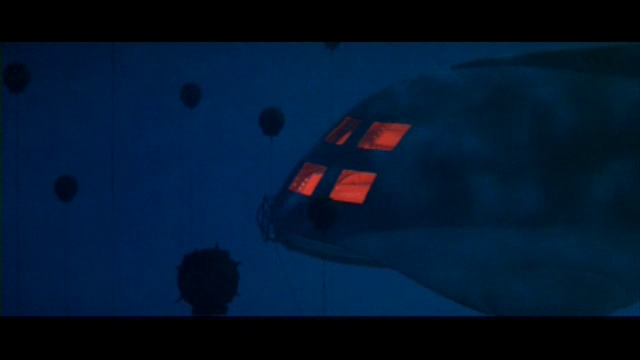

Fighting killer seaweed! Oh wait… that's Diver Dan. Which is better.
There is one mildly compelling thread in Voyage. Throughout the film, Admiral Nelson becomes increasingly irascible and monomaniacal. The ship's psychiatrist is certain that he's cracking up. Captain Crane, the Seaview's skipper, becomes concerned with Nelson's irrationality, opposing him at every turn. The crew seethes toward mutiny, and incidents of sabotage occur.
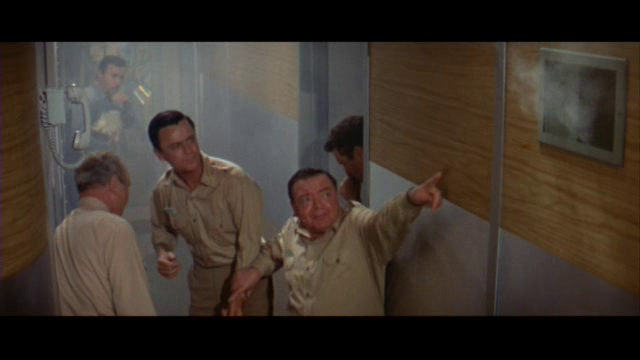
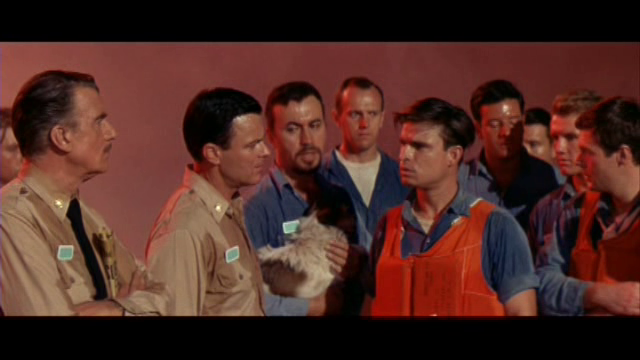
Given the peremptory manner in which the Admiral hatched his plan, as well as the news that the navies of the world have begun a hunt for the Seaview to prevent it from launching its missiles, I started to think that perhaps we weren't supposed to sympathize with Nelson. That Voyage was a morality play about the danger of self-righteous action in the face of contrary evidence. This thread climaxes with Crane's relieving of Nelson just as an American attack submarine appears to do battle with the Seaview.
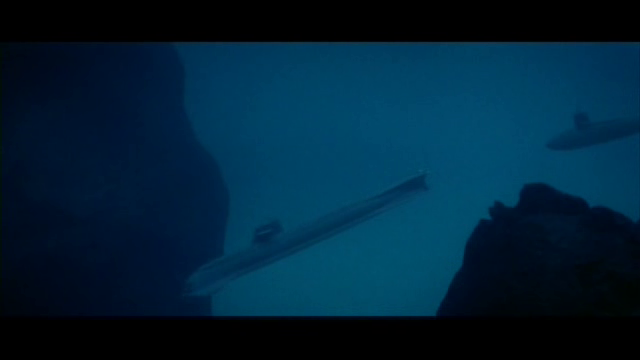
For a moment, Voyage teetered on the edge of watchability. Could Allen salvage an hour of badness?
Well, no. You see, it turns out that Zuko was wrong. The Belt doesn't burn itself out, evidence of which comes just before the launch window (even though the whole drama of the film depends on Nelson not believing he'll get this information until a full day after). So the Admiral was right all along. After a few minutes of tacked on drama involving a giant octopus and a couple of civilians who lacked proper faith in the infallible Admiral, the missile is fired at the last minute. The Van Allen Belts explode outward, and the day is saved.

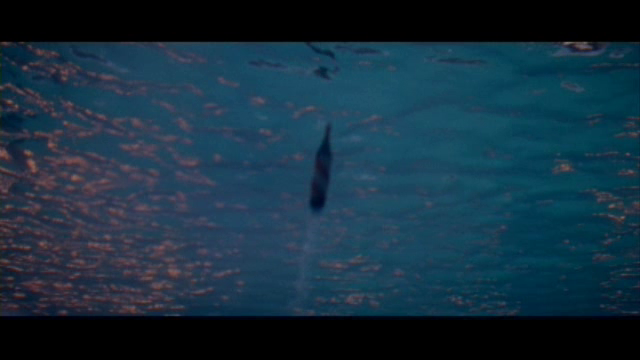
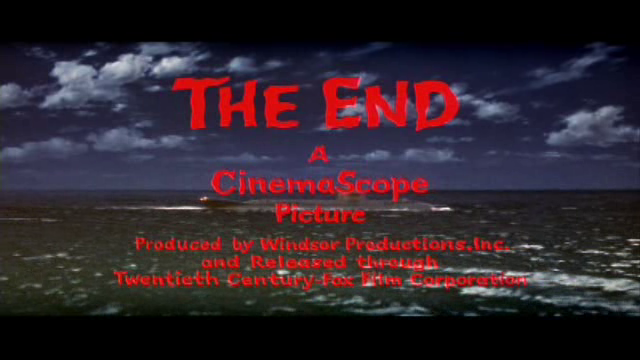
In short, in just 5 minutes, Irwin Allen sabotages his own movie, sacrificing an actual story for some cheap (and I do mean cheap action).
It's films like Voyage that rightly make Asimov trepidatious about going to the movies. And in this case, it was the father who dragged the child unwillingly to the theater. I feel terrible. Almost as terrible as Irwin Allen should feel for making this flick.
One star.
But don't just take my word for it…

by Lorelei Marcus
Today we watched Voyage to the Bottom of the Sea. I'm sorry to say that this movie was more of a voyage to the sea of explanation than anything else. Almost everything was told to us in radio or TV announcements. The sets consisted of three colors, gray, red, and grayish blue. The acting was mediocre, the dialogue almost nothing but exposition, and the costumes all a bland uniform beige. By the end of the movie I couldn't tell anyone apart!
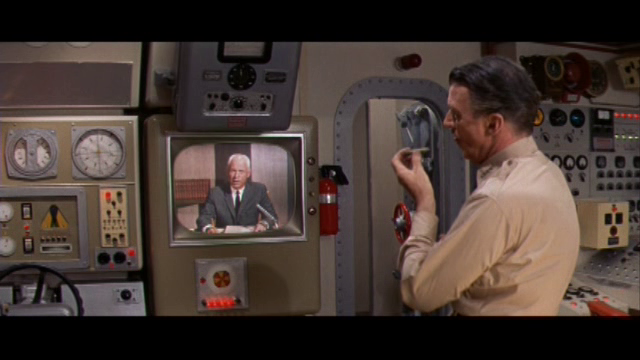
Tell us more, magic box!

Who's who again?
There was a plot to the movie, but filled with too many holes to count, and the entire movie was conveyed through static speeches or random (speechless) visuals. God forbid you have both at the same time though! That would mean the movie might start to make sense!
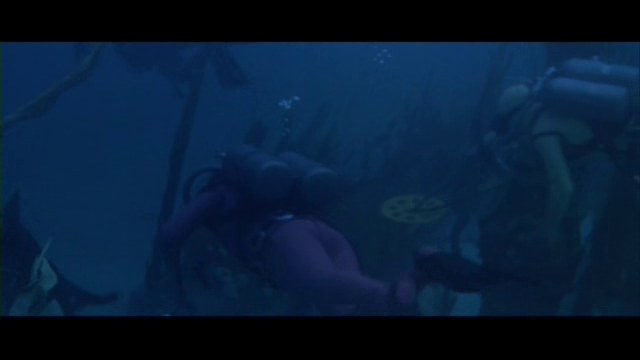
Ten minutes of silent diving footage? Sure, I'll wait.
All joking aside, the movie was bland, boring, and predictable. I guessed events long before they happened. There wasn't even any journeying to the bottom of the sea as the title suggested. If I had to choose, I'd have to say the best parts of the movie were the cook's parrot, the dog (carried aboard by a rescued civilian), and one of the crew member's accents. That should tell you how hard it was to find a good part to this movie.

Gertrude lives!
Oh the ending, the ending was the worst. Basically the movie kept putting out a certain message. Conveying it through actions and behaviors. Though it was kind of obvious it was also pretty clever, for this movie at least. The ending, however, threw that all away and did the opposite of what THE ENTIRE MOVIE had been building up to.

"Ha ha! I was right all along."
Overall this movie was one of the worst I've seen with my dad. I'd give it a 1 out of 5. I do not recommend you see this movie. It's the worst kind of bad, where it's not even ironically good. I was tempted to walk out of the theater it was so bad. They tried really hard to make a movie, and didn't. So please, spare yourself from this, and be glad we watched it so you don't have to.
This is the young traveler, signing off.




















